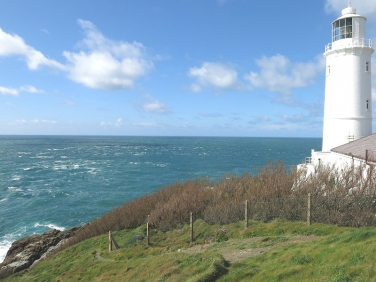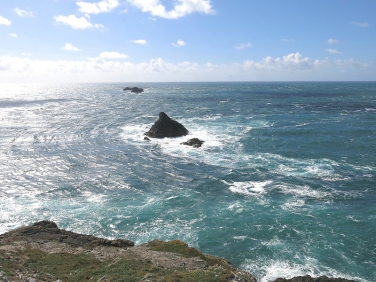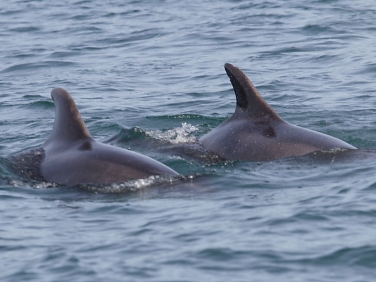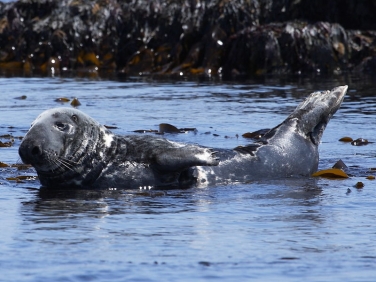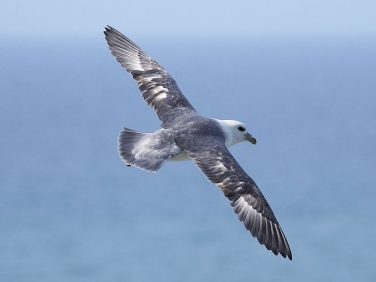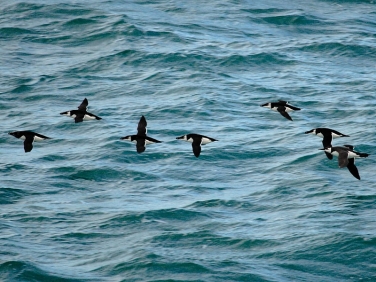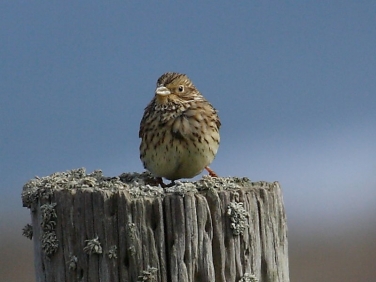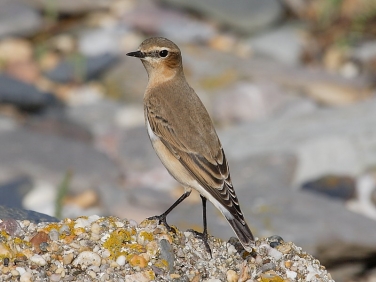From the top of the high cliffs far reaching views can be had of the surrounding waters.
Dolphins, Basking Sharks, seals, sea birds and even the occasional whale are recorded annually.
Nearby are the glorious sandy beaches of Constantine Bay and Harlyn Bay.
The popular little harbour of Padstow is within a few minutes drive.
View Trevose Head in a larger map
The best sea watching places often depends on the wind direction but popular places include the grassy slope near the lighthouse gate and the tip of Dinas Headland overlooking The Bull Rock just to the east of the car park.
Due to the height of the cliffs above the water a good pair of binoculars or a telescope are recommended.
Dolphins, porposies, whales and Oceanic Sunfish
Common Dolphin and Bottlenose Dolphin are recorded fairly frequently throughout the year but their appearances are unpredictable.
Sightings of scarcer species such as Risso’s Dolphin and Harbour Porpoise occur annually.
Distant sightings have also been had of Whales.
In the summer it can be possible to see Oceanic Sunfish feeding just beneath the surface.
Seals and Basking Sharks
Grey Seals can be seen at any time of year in small numbers.
It’s not unusual to see a seals head pop up in the waters around the base of the cliffs.
Basking Sharks are recorded between April and October but their numbers and appearances are extremely variable from year to year.
The best chance of seeing them is during settled weather when plankton attracts them close in shore.
Seabirds
Cormorant, Shag, Guillemot, Razorbill, Fulmar, Gannets, Raven, Kittiwake, Herring Gulland Great Black-back Gull can be commonly seen throughout the year.
Small numbers of Puffin are recorded but views may be distant.
Best times are during strong west to northerly easterly onshore winds when species normally further out to sea are carried closer inshore.
Between April and October during on shore gales thousands of Manx and a few Balearic Shearwaters can be sighted in a single day.Several species of scarcer Shearwaters, Skuas, Terns, Petrels, Auks, Gulls and terns are sighted annually.
In favourable conditions Trevose can provide some of the best sea watching to be had anywhere in the British Isles offering both huge numbers but also rareities.
Other birds
As well as seabirds the headland supports good numbers of bird species around the cliff tops and adjoining rough grassland and arable fields.
Skylarks are common and the nationally scarce Corn Bunting breed in the area.
There are signs indicating areas where visitors are requested to stay on paths and keep dogs on leads in order not to disturb ground nesting birds.
Trevose can also be an excellent place to see migrants recording some of the countries earliest arrivals.Wheatears can be common in the spring and Martins and Swallows may be seen arriving in off the sea.
The nearby arable fields provide a valuable food source for several bird species.
In winter, amongst the flocks of linnet, Chaffinch, Buntings and Pipits feeding in the stuble fields, small numbers of Lapland Bunting and Brambling may occur.
